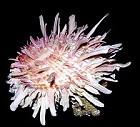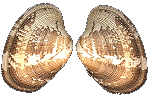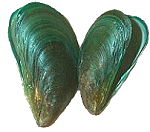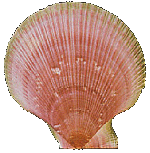|
|
 |
|
Number of Identified Species
|
 |
|
The well known bivalves are clams, mussels, scallops and oysters.
There are approximately 15, 000 species in this taxon. 2,000 of these species are freshwater. All Bivalves are aquatic.
They either live in marine or freshwater environments.
|
 |
|
Examples of Bivalve Species:
| Spondylus americanus. ( Atlantic Thorny Oyster ) |

|
| Tapes philippinarum. ( Manilla Clam ) |

|
Habitat
All Bivalves accquire sea water and freshwater to survive,
reproduce and be fed. Different species of Bivalves live in different freshwaters, or marines of the world. For example, some
mussels may live in the freshwaters of New Zealand. Mussels and Oysters live attached to a substrate, like a huge rock
in the water. Some scallops are able to survive in the deep ocean sea. Clams burrow underground or live in the bottom
of the water.
Bivalves can be found in the waters all over the world. Locations like that
waters of China, Japan, Southern US, and Alaska.
|
|
 |
|
| Perna viridis. ( Green Mussel ) |

|

|
| Chlamys rubida. ( Pink Pacific Scallop ) |
Size
Different Bivalves vary in different sizes. The biggest Bivalve is the Giant Clam, which can grow up to 4 feet or 1.2
meters. It can weigh more than 227 kilograms.

|
| These giant clams are at a fisheries research center on Micronesia's Koror Island |
|
 |
|
|
|
|
|
Project done by Monica Dhanjas and Marie Melegrito
COPYRIGHT 2008
|
|
|
 |

